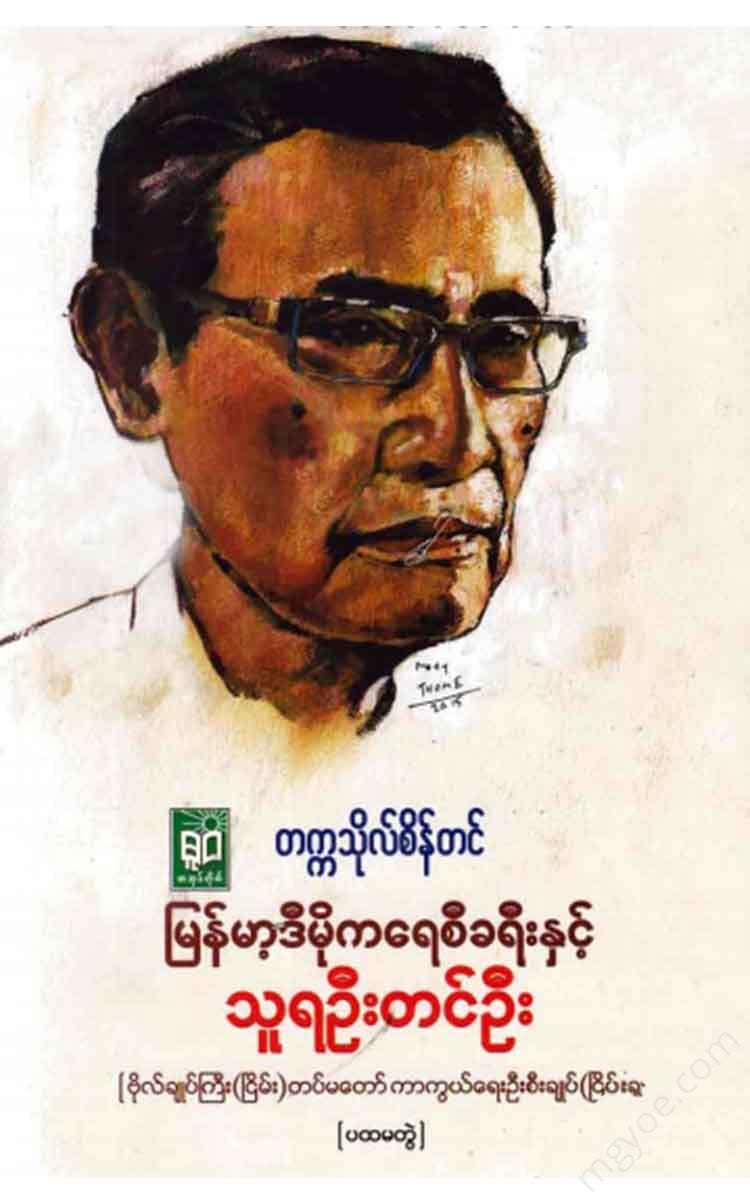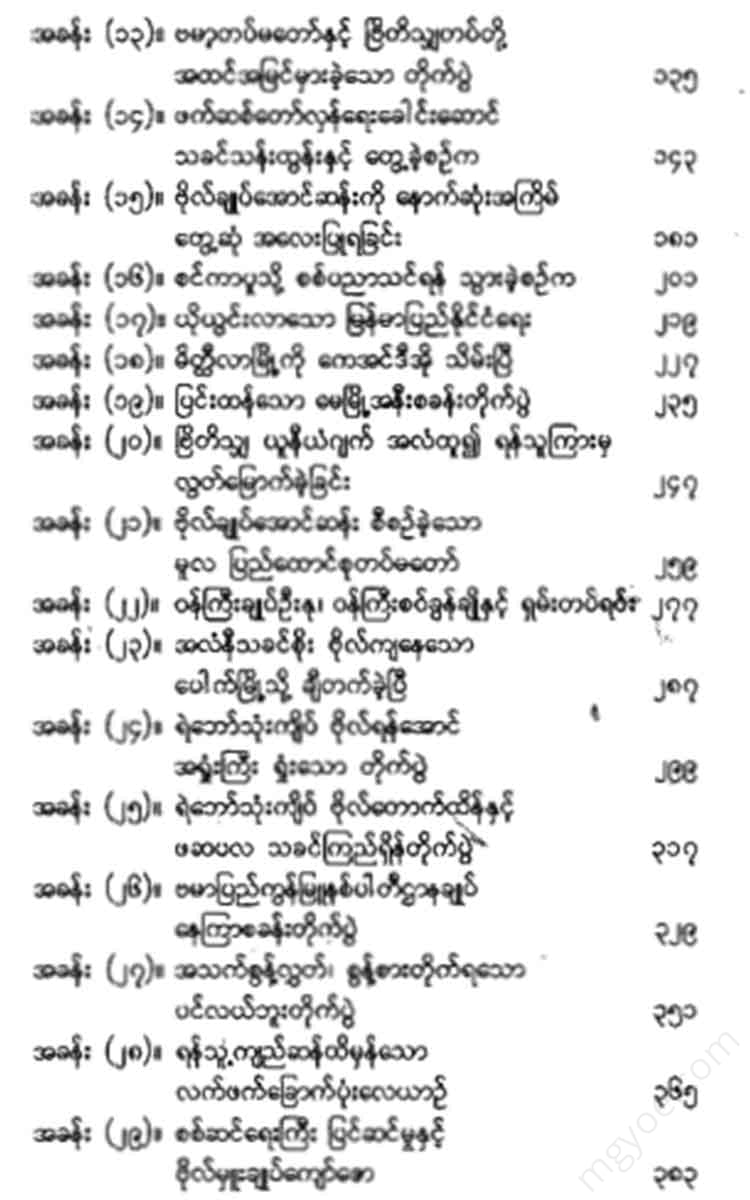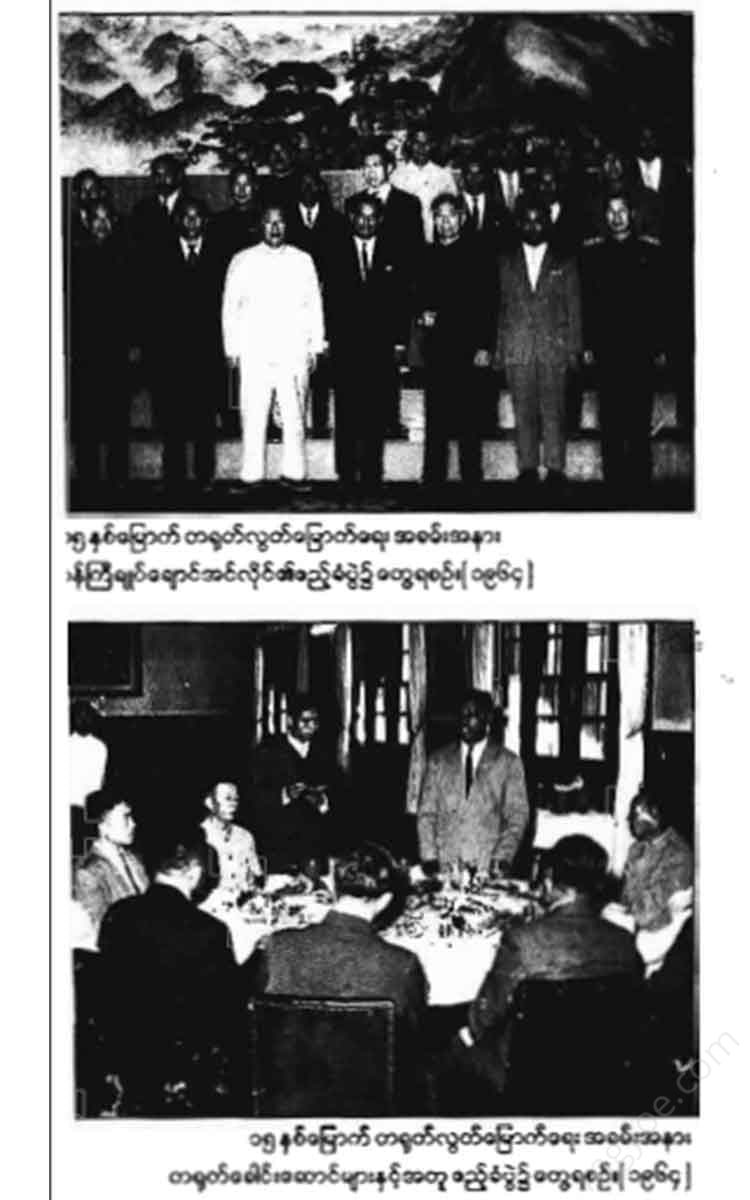Other Websites
University Diamond - Myanmar's Journey to Democracy and Thura U Tin Oo (1)
University Diamond - Myanmar's Journey to Democracy and Thura U Tin Oo (1)
Couldn't load pickup availability
:: Click on Buy it now to download the ebook . After placing your free order, the download link will be sent to the reader's email address used to log in to the mgyoe.com website.
:: The Ebook (Free) books on mgyoe.com are only books that have been circulating on the internet for a long time.
:: It is just a compilation so that readers can easily find it when they want to read it.
:: If reprinted by bookstores, the download links for these e-books will be removed.
------------------------------------
Chapter (1)
The birth of a child soldier for the Commander-in-Chief of Defense
University of Myanmar. Today is September 27, 2012. I am visiting the house of retired General Thura U Tin Oo, Zeya Kyaw Htin, at No. 30, Bodhi Avenue, Yangon, to record a recording for the book Myanmar's Journey to Democracy and Retired General Thura U Tin Oo. I would like to tell you a full and honest story about Thura U Tin Oo's life, which he has dedicated his life to the country since the day he was born.
Thura U Tin Oo.. I am very grateful to the great writer, U Thant Sein Tin, for showing me such kindness and helping me to publish a good book. I have had many requests to compile and publish a book based on my experiences. But I have never told anyone that I would write a proper book. I have written short stories and articles here and there. Let me leave it at that. Now, I will write about the anti-colonial and national liberation, anti-fascist revolution and the Burmese liberation movement.
I am the youngest soldier who has participated in the history of the independence movement since the beginning. That is how it has become, and now, as a military person, as a Tatmadaw, I am the only one who has continued the tradition of the former Commander-in-Chief. However, as for our great leaders, the thirty comrades, there are two of them now, General Kyaw Zaw and Major Ye Htut. They are still alive. Major Ye Htut is not very healthy. And then there is General Kyaw Zaw, whom I love and respect very much. General Kyaw Zaw is also in China now and is getting old. I have heard that he is not very healthy. (As of the day of this writing, former Brigadier General
It has been more than 3 months since Kyaw Zaw passed away in China, author)
Now I will tell you everything I can remember from my life.
I was the eldest of six children born to my father, U Maung Kyaing, and my mother, Daw Mya Tin, on Baigyi Tan Road in Pathein. My mother said that I was born between 2 and 4 pm on March 12, 1927.
Only on Saturday.
That Christmas birthday, in Burmese terms, was Saturday, the 10th day of the Tabaung lunar month, 1288. When I was born, my mother, my grandmother, came to help me, so I guess she was a little superstitious. Since Mae Dawgyi's village is between Myaung Mya and Pathein, she called me the firstborn, like a fire. As a sign of respect, my grandmother, Daw Moe, took a large sword and cut me seven times over my body.
(2)
Retired General U Tin Oo talks about his childhood with a smile. The Sony cassette tape, which is a calm and collected record of the life of Thura U Tin Oo, is a story of a brave soldier.
What needs to be highlighted here is the story of Pathein, the hometown of Thura U Tin Oo.
I will now look for and present the various interesting facts about Pathein District in the Encyclopedia of Myanmar, Volume 6, page 347.
Pathein District.
Pathein District is located in the southwestern tip of Ayeyarwady Region, Lower Burma. It is the largest district in Ayeyarwady Region and is shaped like a pyramid. Pathein District is bordered by Hinthada District and Thandwe District to the north, Maubin District and Myaungmya District to the east, and the Bay of Bengal to the west and south.
The Rakhine Yoma Range runs north to south, paralleling the coastline in the western part of Pathein District, and ends at Maw Tin Son.
Many small rivers flow through Pathein District. The most important river is the Pathein River (Ngawan River). It branches off from the Ayeyarwady River above Hinthada, flows from north to south, and empties into the Bay of Bengal. The Ngawan River has many small islands, the most notable of which are Hai Gyi Island, the turtle island known as Thamy Hla Island, which is famous for its turtle eggs, and the English name Diamond Island.
Pathein, the tributaries of the Ngawan River are the Daka River, which flows about 14 miles upstream of Pathein, and the Pammawaddy River, which flows 28 miles south of Pathein.
Pathein District produces a lot of rice and is home to rice, timber, and fish paste industries.
From 1872-73, the Yangon-Pathein shipping route was opened by the Ayeyarwady Shipping Company. The only railway in Pathein District is the Pathein-Hinthata line (86 miles long).
Pathein District covers an area of 149 square miles and has a population estimated at 1,000,000 according to the 1956 census.
There are 775,548 people.
Pathein District was a prominent region during the time of ancient Myanmar and the Mon kings, and was part of the three Mon kingdoms of the Ramayana Dynasty. It was part of the Mon kingdoms known as Kusima Mandala, Kusima Mara, and Mon Nyaya.
During the reign of King Narapati Sithu of the Bagan Kingdom, who ascended the throne in 536 B.E., the Shwe Tig Taw list records the names of 32 cities in Pathein. Pathein has been a seaport for centuries. The Mon and Burmese have competed for political power in Pathein for many years.
The British colonial government attempted twice to establish a base in the Ayeyarwady Delta region of Burma, but failed. In 1687, the British established a base on Hai Gyi Island in Pathein District and opened the East India Company in Pathein.
In 1757, the British government helped the Mons in a conflict between King Alaungmin Dhammagyi of the Konbaung Dynasty and the Mons. Alaungmin Dhammagyi sent Burmese troops to Haigyi Island, where the British were stationed, and attacked and destroyed the British fort.
Pathein city.
Pathein is the administrative center of Ayeyarwady Region, in lower Myanmar. It is the seat of the Ayeyarwady Region Commissioner and the Pathein District Office. Pathein is located on the banks of the Ngawan River, 75 miles from the sea. It is accessible to large seagoing vessels.
Pathein was an ancient port city, and the port city was important for overseas travel to Burma, the Indian subcontinent, and Ceylon.
The long-lived city of Pathein was called Atithanagara from the year 218 of the religious era during the reign of King Sri Dhamma Soka of the Mizzima region. Then it was called Kusima Maratha, and during the reign of King Minyan Naratheinkha of the Bagan Kingdom, Kusima was renamed Pathein.
In the First Anglo-Burmese War of 1824, the British colonial army captured Pathein and ceded it under the Treaty of Yandapo. In the Second Anglo-Burmese War of 1852, the British colonial army attacked and captured Pathein.
Buddhists
Pathein is 12 square miles in area and has a population of 77,905 according to the 1953 census. The Burmese Buddhists are the largest group, followed by Christians and Karen. Pathein is located on the east and west banks of Pathein, with the new town on the east bank, which houses the government office and a large market.













